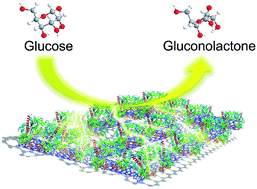An ultrahigh electron-donating quaternary-N-doped reduced graphene oxide@carbon nanotube framework: a covalently coupled catalyst support for enzymatic bioelectrodes†
Abstract
Carbonaceous materials are currently the most extensively researched materials as catalyst supports for enzymatic biofuel cells (EBFCs). N-doping is an extremely effective strategy to tailor the unique electronic properties of carbon materials. However, the coexistence of electron-accepting pyridinic- and pyrrolic-N with electron-donating quaternary-N weakens the n-type behavior, resulting in lower electron mobility than that of pristine graphene, thus impacting a range of device applications. Herein, we demonstrate a covalently coupled ultrahigh quaternary-N-doped reduced graphene oxide/carbon nanotube (QN-rGO@CNT) network through electrostatic interaction as a novel enzyme support for EBFCs. It is found that N bond types are controllable via thermal treatment, and the as-made QN-rGO@CNT composite with an interconnected porous structure, covalent coupling, and ultrahigh electron-donating quaternary-N-doping exhibits superior electrochemical properties. As a result, the present glucose/O2 EBFCs equipped with enzyme-functionalized QN-rGO@CNT electrodes can deliver a high open circuit potential of 0.89 V, a short-circuit current density of 2.25 mA cm−2 and a maximum power density of 0.9 mW cm−2. Using the high-throughput fabrication method reported in this work, the monotype N-doped carbon hybrid can be commercially utilized as a promising supporting electrode in BFC applications.



 Please wait while we load your content...
Please wait while we load your content...